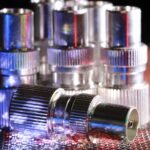Contents
ToggleInnovative Technologies in Sustainable MEP Design
To achieve truly sustainable buildings, Mechanical, Electrical, and Plumbing (MEP) systems must be designed with energy efficiency and environmental impact in mind. Thankfully, a wave of innovative technologies is empowering MEP engineers to create eco-conscious and high-performing buildings.
-
Predictive Energy Modeling:
- Beyond Guesswork: Energy modeling software allows engineers to simulate a building’s energy performance before a single brick is laid. These sophisticated tools provide valuable insights into energy consumption patterns, enabling optimization of HVAC systems, lighting, and other energy-intensive elements.
- Data-Driven Decisions: By analyzing various design scenarios, engineers can predict energy use, set realistic efficiency targets, and make informed decisions about system selections, ultimately minimizing environmental impact.
-
BIM: Building Information Modeling on Steroids
- Collaboration Unleashed: BIM transcends traditional 2D drawings, creating a dynamic 3D model of the building. This collaborative platform empowers architects, engineers, and contractors to work seamlessly, reducing errors, minimizing construction delays, and improving overall project efficiency.
- Lifecycle Sustainability: Beyond construction, BIM facilitates lifecycle assessments, allowing engineers to evaluate the long-term environmental impact of MEP systems. This crucial data helps identify areas for improvement and ensures the building remains sustainable throughout its lifespan.
-
The Internet of Things (IoT): A Network of Intelligence
- Predictive Maintenance: IoT-enabled sensors monitor the performance of MEP systems in real-time. This data-driven approach enables predictive maintenance, alerting engineers to potential issues before they escalate into costly breakdowns, minimizing downtime and maximizing system lifespan.
- Energy Management on Steroids: By collecting and analyzing data on energy consumption patterns, IoT empowers building owners to optimize energy use, identify areas for improvement, and reduce operational costs.
-
Reimagining HVAC: Advanced Technologies Take Center Stage
- Beyond Traditional HVAC: Innovative technologies like Variable Refrigerant Flow (VRF) systems, geothermal heat pumps, and energy recovery ventilators (ERVs) offer significant advantages over conventional HVAC systems.
- Energy Efficiency and Comfort: These advanced systems not only reduce energy consumption and operational costs but also enhance occupant comfort by providing superior temperature control and improved indoor air quality.
-
Smart Lighting: Illuminating Efficiency
- Adaptive Lighting: The systems harness the power of sensors and automation to optimize illumination by responding to factors such as occupancy, natural daylight, and the time of day.
- Energy Savings and Enhanced Experience: By optimizing lighting usage, these systems significantly reduce energy consumption while creating a more comfortable and productive environment for building occupants.
-
Water Conservation: Harvesting Rainwater and Reusing Greywater
- Sustainable Water Management: Rainwater harvesting systems collect rainwater for use in irrigation, toilet flushing, and other non-potable applications. Similarly, greywater recycling systems reuse wastewater from sinks and showers, reducing reliance on municipal water supplies.
- Environmental Benefits: These water conservation strategies minimize water wastage, reduce the strain on local water resources, and support sustainable landscaping practices.
-
Harnessing Renewable Energy:
- Clean Energy Generation: Integrating renewable energy sources, such as solar panels and wind turbines, into building designs empowers buildings to generate their own clean energy, reducing reliance on fossil fuels.
- Enhanced Grid Resilience: Renewable energy systems can provide backup power during grid outages, enhancing building resilience and ensuring continued operations during emergencies.
-
Energy Storage: Powering the Future
- Optimizing Energy Use: Energy storage technologies, such as batteries and thermal energy storage systems, enable buildings to store excess energy generated from renewable sources or during off-peak hours for later use.
- Demand Management and Cost Savings: By storing energy for use during peak demand periods or times of high energy prices, these systems optimize energy use and reduce operational costs.
Conclusion
The future of sustainable MEP design is rooted in the adoption and integration of cutting-edge technologies. By utilizing predictive energy modeling, capitalizing on the potential of BIM, and incorporating IoT, renewable energy solutions, and advanced HVAC systems, MEP engineers can design buildings that prioritize energy efficiency, environmental stewardship, and superior occupant comfort, while significantly contributing to the long-term sustainability of the built environment.












